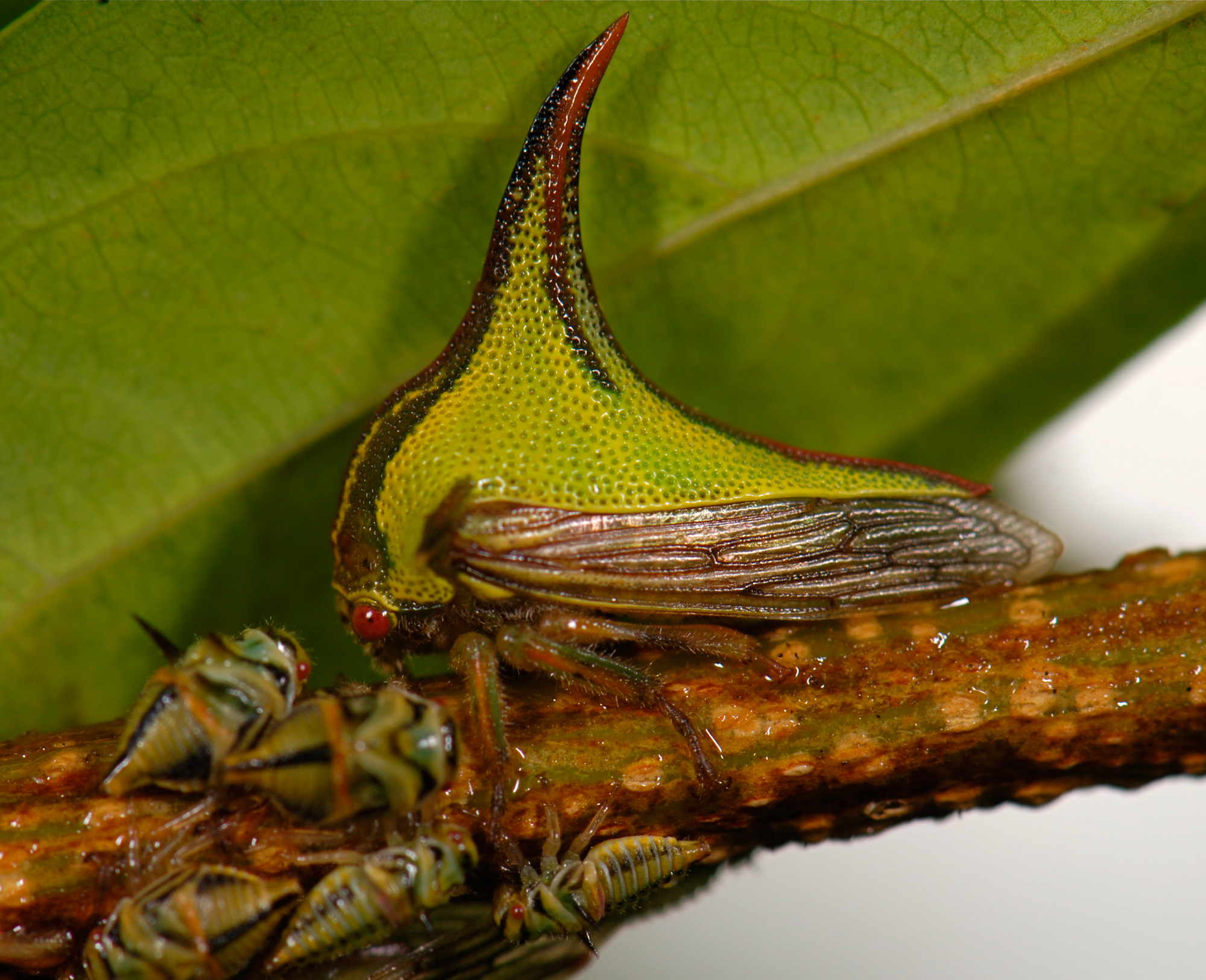Science News
Treehoppers, Helmets and Wings
May 4, 2011

Forget alien life. Let’s talk about treehoppers. These insects, related to cicadas, are so foreign and funky looking they could herald from another world. But they’re actually found everywhere on Earth, except Antarctica.
Treehoppers’ alien good-looks are all due to their varied helmets—appendages that grow from the first segment of their thorax. (Take a look at some of these helmets on Ed Yong’s blog in Discover.) The helmets’ purpose seems to be a method of disguise or mimicry to throw off predators.
Since many other insects do grow horns from the thorax, the treehopper’s helmet was thought to be an extension of the body. But something about their helmets (besides their looks) is different. According to ScienceNow,
Like wings, helmets have veins, which prompted one researcher in the 1950s to suggest that the helmet was a modified wing.
But no other known insect has wings growing out of the first segment of the thorax, so scientists quickly dismissed this theory. Until two French scientists got in the mix. They started thinking more about this wing theory and looked at five different species of treehoppers. They found another similarity between helmets and wings, says ScienceNow:
To their surprise, they found that, as with wings and legs, hinges linked the helmet to the body, making it a flexible appendage, readily ripped off.
The researchers dug deeper. Tracing back treehoppers’ evolutionary history, examining fossil insects and current treehopper genes, they found that the helmet is indeed a third pair of non-functioning wings. Again, from Ed Yong:
They are the result of ancient genetic potential, repressed for 250 million years, and unlocked by this one group.
250 million years? No wonder treehoppers are so other-worldly!
The research is published today in Nature.
Image by Marshal Hedin/Wikimedia